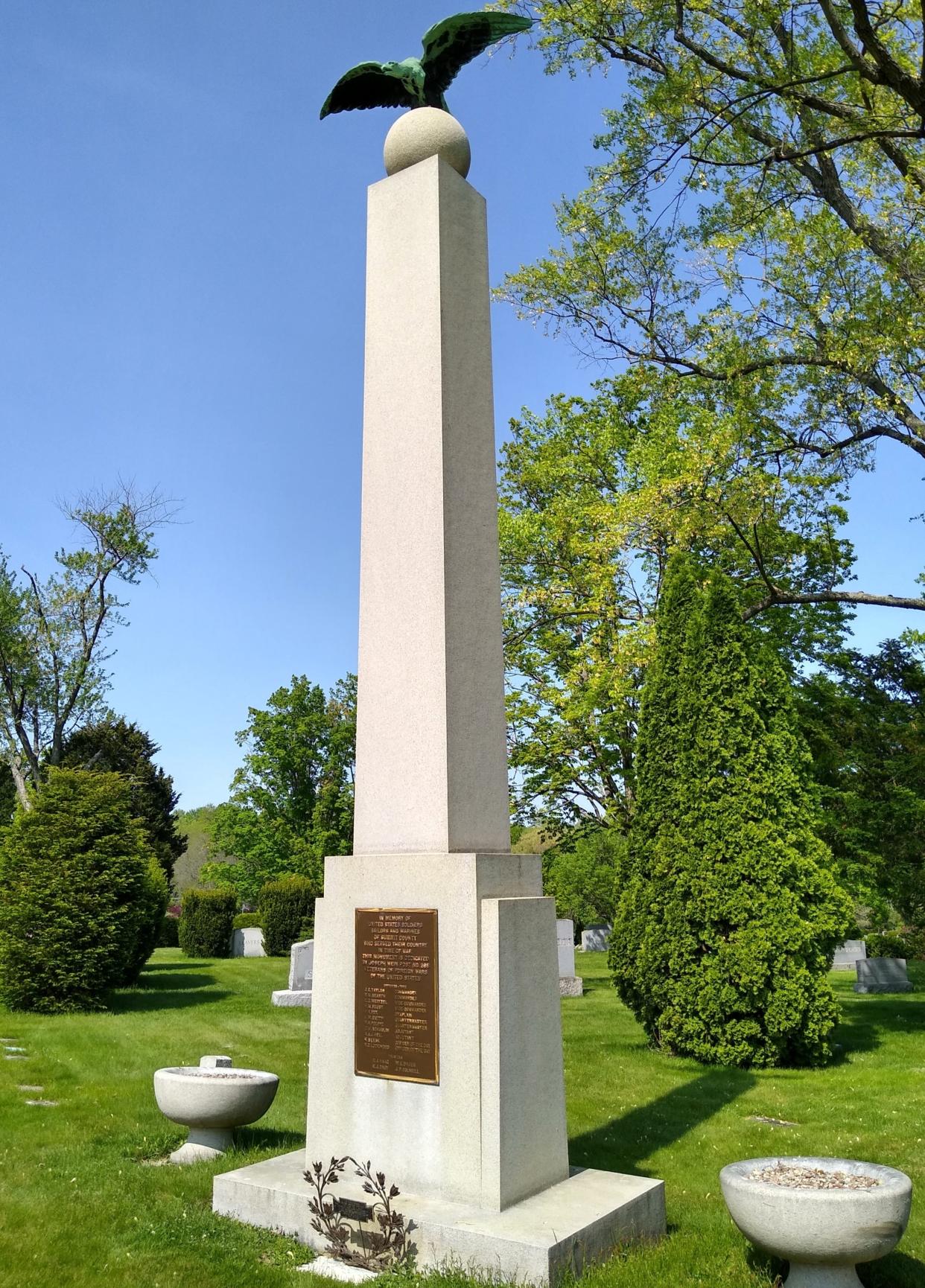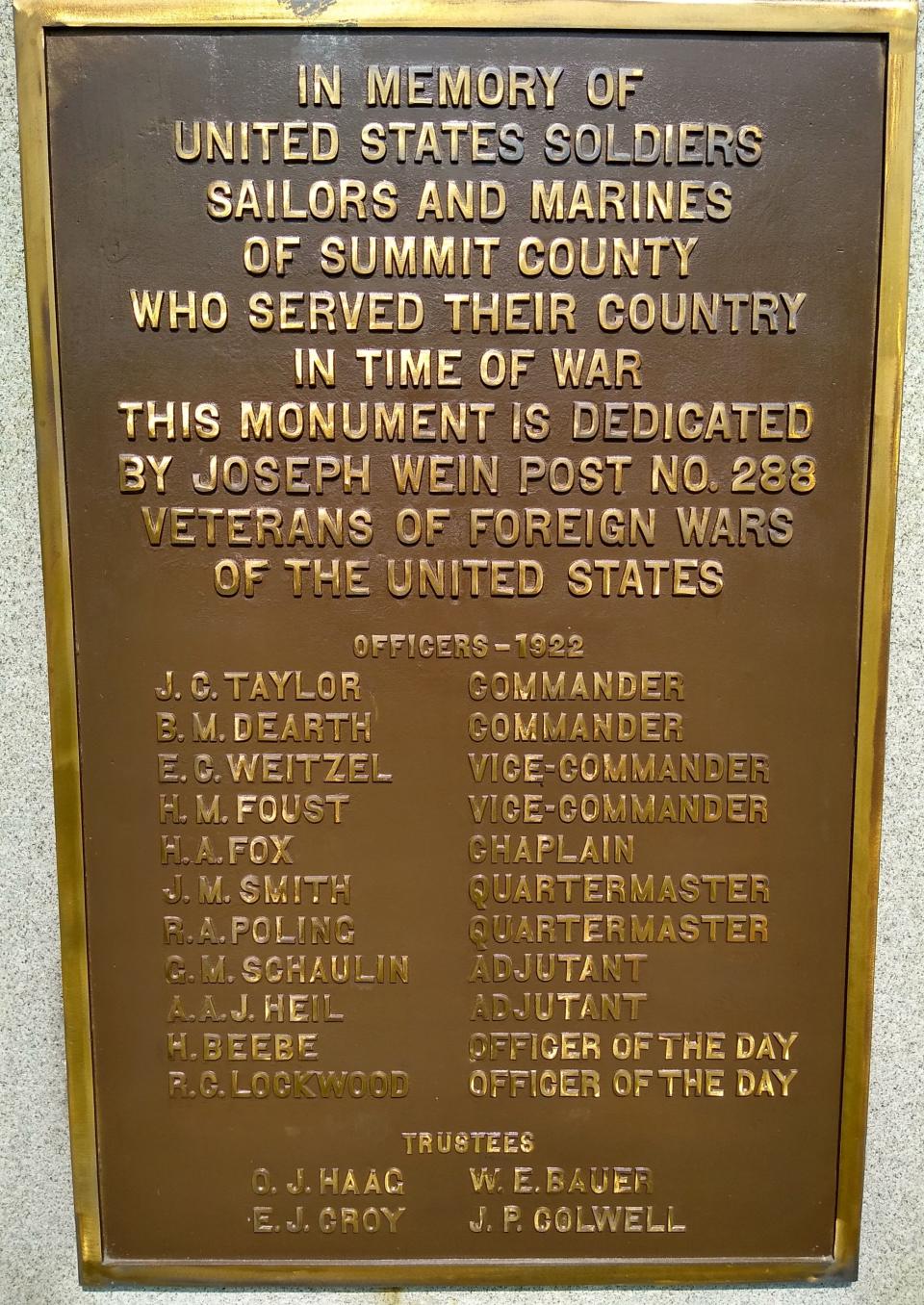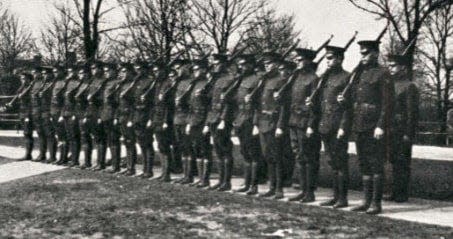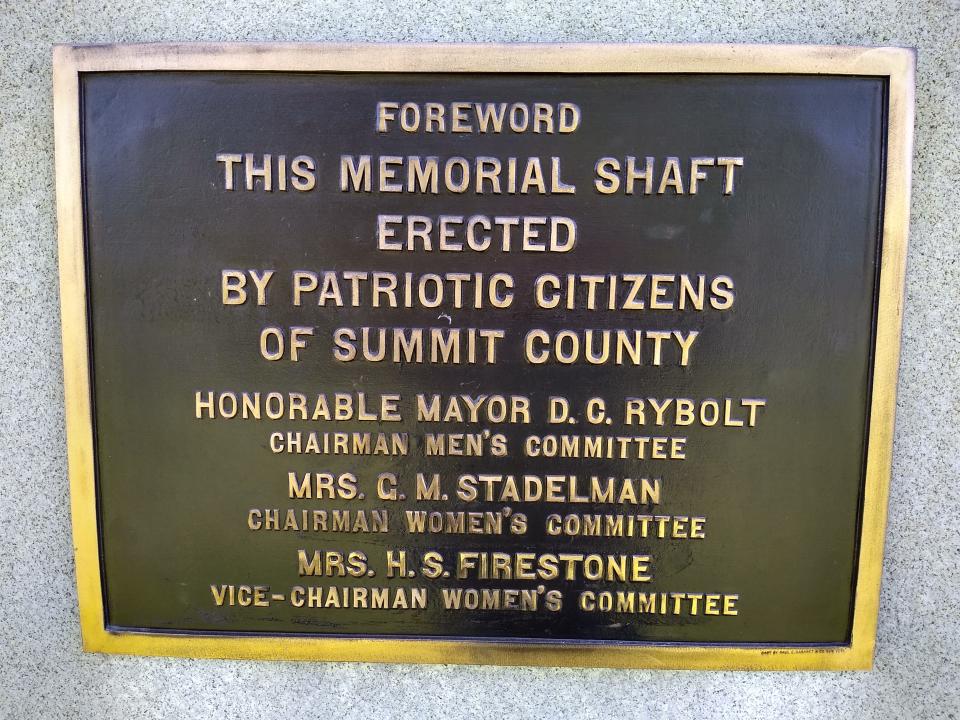Local history: War memorial unveiled before sham battle 100 years ago

The Battle of Elm Hill is a forgotten conflict in Akron’s history.
Although the city was overrun by invading forces, prompting defending troops to retreat in a cloud of smoke, not a single casualty was reported.
The guns fired blanks.
In a strange turn of events 100 years ago, Akron residents solemnly dedicated a monument to their war dead and then presented an epic reenactment of military combat attended by tens of thousands of spectators.
First, the monument.
Organized in 1919 with 50 charter members, Joseph E. Wein Post No. 288 of the Veterans of Foreign Wars led a campaign to build a “memorial shaft” to honor local heroes of World War I. Nearly 9,000 Akron men had served in the war, and more than 300 had died.
The VFW raised money for the project with the sale of 40,000 red poppies in 1922. The column would rise at the new Rose Hill Burial Park “several miles beyond the end of West Market Street” on Akron-Medina Road in an unincorporated area of Bath that is now Fairlawn.
Standing 25 feet tall, the gray marker was carved from Barre granite quarried in Vermont and cost $6,000 (more than $150,000 today) to erect. The Akron Monumental Works on West Exchange Street designed the landmark and topped it with a bronze eagle, wings spread, perched on a large granite orb.

War memorial dedicated in 1923
Thousands of people, including veterans of the Civil War, Spanish-American War and Great War, rode to the cemetery for a dedication service at 1 p.m. Wednesday, March 30, on Memorial Day 1923. The motor procession included trucks, jitneys, automobiles and 10 buses.
A U.S. flag fluttered at half-staff as the crowd assembled. Speakers included Akron Mayor D.C. Rybolt, Idabelle Firestone and Gertrude Stadelman.
Boy Scouts unveiled the shrouded monument and the audience sang “America.” Reciting the poem “In Flanders Fields,” Annabel Walker noted:
“In Flanders’ fields the poppies blow
“Between the crosses, row on row,
“That mark our place; and in the sky
“The larks, still bravely singing fly,
“Scarce heard amid the guns below.”
Veterans sounded taps, raised the flag to full staff and fired a rifle volley. The Rev. John J. Scullen, pastor of St. Vincent Church, gave a benediction. Adjutant General R.W. Elton of New York, representing the national VFW headquarters, delivered a speech of acceptance.
Then the crowd broke up and rode to West Akron. It was time to go to war.
The Battle of Elm Hill was a sham
A sham battle, hailed as “the greatest Memorial Day spectacle ever seen in Akron,” was staged at 2 p.m. on West Market Street near Rose Boulevard. More than 20,000 people watched from the hills as 2,000 veterans, national guardsmen and ROTC cadets lined up for conflict.
Organizers arranged to have 30,000 blanks for rifles and machine guns, 100 rounds of trench mortar ammunition, canisters of imitation gas and 400 rounds of artillery rockets for the occasion.
According to the script, enemy troops had invaded Ohio from the west, conquering every town en route to Akron. The Battle of Elm Hill was the city’s valiant attempt to repel the attackers.

Many of the “enemy troops,” some riding horses, were actually World War I veterans only a few years removed from the real battlefield. The defenders, vastly outnumbered, were played by ROTC cadets from the University of Akron. Other participants included the Battery B 134th field artillery of Akron, the Battery A 135th field artillery of Canton and Hospital Company 13 of Barberton.
“The ‘war’ started at 2 o’clock with a preliminary attack by machine guns and trench mortars,” the Beacon Journal reported. “It was followed by an infantry advance and ended with a spectacular charge of cavalry.
“When the attackers arrived at their objective, a masked artillery battery, they found that the defenders had withdrawn behind a smokescreen that had screened their movements for nearly a quarter of an hour.”
It was a downbeat ending, really. When it became apparent that they couldn’t hold their positions, the Akron defenders retreated.
Spectators were left to guess whether the invading hordes would conquer the city or whether the defenders would regroup to fight another day.
Oh, well. Can’t win them all.
The Battle of Elm Hill ended in a cloud of smoke. The crowd broke up and went home.
A week later, the Strand Theater in downtown Akron showed a newsreel featuring the Rose Hill monument and sham battle.
The old battleground is now a residential area. The Herberich-Hall-Harter and D.W. Kaufman real estate companies transformed the land between West Market and West Exchange streets into a vibrant neighborhood.

Monument stands at Rose Hill
The memorial shaft still stands at Rose Hill Burial Park in Fairlawn, although it might not be as apparent to modern visitors because the cemetery has grown so much over the past century. It’s located in Section 4, surrounded by the graves of 200 veterans who fought overseas.
For decades, the VFW post held its Memorial Day services at the site.
According to bronze plaques, the monument was “erected by patriotic citizens of Summit County” and dedicated to the memory of U.S. soldiers, sailors and Marines “who served their country in time of war.”
A U.S. flag flutters over the site 100 years later. The landmark will quietly mark its centennial this month without a sham battle to follow.
Mark J. Price can be reached at mprice@thebeaconjournal.com
Local history: The torrid truth of Climax Park
More: ‘Sword in the Stump’ removed from Wallhaven neighborhood in Akron
This article originally appeared on Akron Beacon Journal: Rose Hill Burial Park war memorial unveiled in 1923 before sham battle

